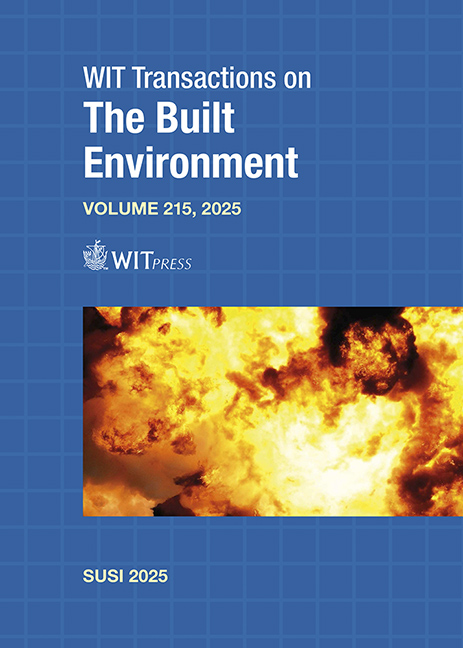ON THE USE OF ARTIFICIAL NEURAL NETWORKS FOR INVERSE ANALYSIS OF SINGLE DEGREE OF FREEDOM RESPONSE OF BLAST LOADED STRUCTURES
Price
Free (open access)
Transaction
Volume
215
Pages
13
Page Range
213 - 225
Published
2025
Paper DOI
10.2495/SUSI250191
Copyright
Author(s)
SAMUEL E. RIGBY, DANNY SMYL, TYLER RHODES, ANQI CHEN, GAUTHIER STIEGLER
Abstract
The Single Degree of Freedom (SDoF) method is widely used to evaluate the response of structures or structural elements under blast loading. Here, the structure in question is transformed into a single-point equivalent for which a single equation of motion can be solved. While the SDoF method is orders-ofmagnitude faster than alternatives such as the finite element method, both are focussed only on solving the forward problem (inputs → outputs). In practise, however, a required performance limit is known (peak displacement, support rotation, etc.) and an adequate structure should be provided so as to not exceed that limit. This necessitates some form of iteration as the SDoF equation of motion cannot be simply inverted. Alternatively, machine learning techniques such as artificial neural networks (ANNs) may be used. ANNs are agnostic to input data type and therefore can just as easily learn patterns between input and output data as they can between output and input data. This paper presents a novel application of ANNs to rapidly solve the inverse problem (outputs → inputs) for SDoF structures subjected to blast loads. 180,000 SDoF analyses were run for 36 British Steel Universal Column sections (5,000 runs for each). The subsequent data was used to train an ANN classification network to suggest a section size deemed to meet a target value of support rotation, for a given set of basic inputs (span, peak force, impulse). The ANN is able to perform to a high degree of accuracy (> 90% correct classification of the test data set) and performs well in unseen ‘design cases’, suggesting that machine learning could be a highly valuable tool to aid in solving inverse problems relating to blast loading.
Keywords
artificial neural network, blast, classification, inverse modelling, SDoF





